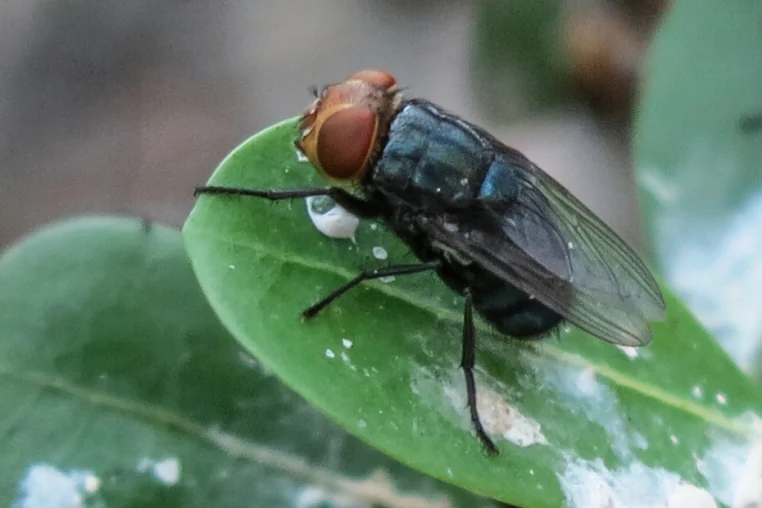Billions of Flies to Be Bred in U.S. Battle Against Devastating Crop Pest
In a bold move to protect U.S. agriculture, federal scientists plan to breed billions of sterile flies to combat the invasive screwworm pest — a technique that blends biology with precision pest control.
In a groundbreaking effort to protect America’s agriculture, the U. S. Department of Agriculture (USDA) is launching a large-scale program to breed and release billions of sterile flies.
The goal? To eradicate or contain a devastating parasitic pest — the New World screwworm — that poses a serious threat to livestock and wildlife across the southern United States. The USDA’s plan involves breeding sterile screwworm flies at a specialized facility, then releasing them in targeted areas where the pest is likely to spread. These sterilized male flies, when released into the wild, will mate with wild females.
Since the males are sterile, the pairings will produce no offspring, leading to a rapid population decline over time. This method, known as the Sterile Insect Technique (SIT), has been used successfully in the past but never on this scale. ### The Screwworm ThreatThe New World screwworm (Cochliomyia hominivorax) is a flesh-eating parasite that lays its eggs in open wounds of warm-blooded animals.
When the larvae hatch, they burrow into the flesh of the host, feeding on living tissue and causing massive damage. If left untreated, a single infestation can be fatal — not just for livestock like cattle and sheep, but also for wild deer, pets, and even humans. Originally eradicated from the U.
S. in the 1960s, screwworms were recently detected in parts of Florida and the Caribbean. Officials fear that climate change and global trade could enable the pest to reestablish itself in the U.
S. , where it could cost billions in economic losses. “We’re on high alert,” said Dr.
Emily Vasquez, a USDA entomologist. “If this parasite spreads unchecked, it could decimate ranching operations, harm native wildlife, and disrupt entire ecosystems. ”### Breeding Billions: Inside the Insect FactoryThe epicenter of the U.
S. program is a facility in Panama jointly operated by the USDA and the government of Panama. Here, scientists raise screwworm flies in tightly controlled conditions.
Once mature, the male flies are irradiated — rendering them sterile but still capable of mating. The process is painstaking. Every week, the facility produces upwards of 100 million flies.
Once scaled to its new target capacity, it’s expected to reach several billion per month. The flies are boxed and transported by plane to release sites where GPS-guided drops are performed over high-risk areas. “This is not science fiction — it’s pest control at the molecular level,” said program director Mark Philips.
“Every sterile fly we release is a bullet in our biological defense system. ”### A Proven but Underutilized StrategyThe Sterile Insect Technique isn’t new. It was first pioneered in the 1950s and was instrumental in eliminating screwworm from the U.
S. by 1966. It has since been used to control other pests such as tsetse flies and certain fruit flies.
What’s different this time is the scale and the urgency. With increasing threats from climate-driven pest migration, authorities see SIT as a way to preempt large-scale infestations before they spiral out of control. “We can’t afford to wait for outbreaks to happen,” said Vasquez.
“Proactive suppression is the only responsible path forward. ”### Economic and Ecological StakesThe screwworm is not just a veterinary problem — it’s an economic time bomb. According to USDA estimates, a widespread reintroduction of the parasite could cost the cattle industry alone over $3 billion annually in lost productivity, treatment costs, and trade restrictions.
Wildlife populations could also suffer. During a 2016 outbreak in the Florida Keys, over 130 endangered Key deer died from screwworm infestations before officials got the outbreak under control. “This pest doesn’t discriminate,” said wildlife biologist Dr.
Tanya Greene. “It hits cows, deer, dogs — even people. It’s gruesome, painful, and often fatal.
”The economic case for mass fly breeding is clear: every dollar spent on prevention through SIT saves up to $20 in response and recovery efforts, according to USDA analysis. ### Logistics and ChallengesExecuting a project of this size presents logistical hurdles. Transporting billions of flies over long distances requires customized aircraft equipped with chilled compartments and automated release systems.
Timing is everything: the flies must be dropped while still active, but not so early that they perish before finding mates. There’s also the challenge of public perception. “We’re not unleashing a plague of flies,” said USDA outreach coordinator Jasmine Bell.
“These insects are sterile, non-biting, and pose no threat to humans or animals. In fact, they’re our best allies in the fight against a much more dangerous enemy. ”Outreach campaigns are being deployed in farming communities to explain the science and purpose behind the releases, including hands-on demonstrations, videos, and school curriculum materials.
### International CollaborationThe success of SIT relies on cooperation beyond U. S. borders.
The USDA has long collaborated with Mexican and Central American governments in creating a screwworm-free buffer zone stretching from southern Mexico to Colombia. This new initiative strengthens those ties and extends the protection northward. Panama, which hosts the primary fly-rearing facility, has expressed strong support.
“This program is a model for global biosecurity,” said Panamanian Agriculture Minister Sofia Valverde. “We are proud to partner with the U. S.
on an effort that safeguards both our environments and economies. ”### Looking to the FutureIf successful, the program may serve as a blueprint for managing other invasive pests. Researchers are already investigating similar strategies for controlling mosquitoes, agricultural beetles, and even disease vectors like ticks.
There’s also interest in enhancing the genetic targeting of SIT — using CRISPR gene editing to create flies with traits that make them more effective at suppressing wild populations. “We’re entering a new era of precision pest control,” said Philips. “With the right tools, we can outsmart nature’s deadliest bugs — not by killing indiscriminately, but by disrupting reproduction with surgical precision.
”### A Modern-Day Arms RaceAs climate change accelerates, pests like screwworm may spread farther and faster than ever before. The USDA’s massive fly-breeding program represents a bold, biology-based counterstrike — one that prioritizes ecological balance over chemical warfare. It’s a story of science, logistics, and old-fashioned agricultural grit.
And if it works, it could mean the difference between infestation and security for farms, ecosystems, and communities across the continent. As one USDA technician put it, watching sterile flies swarm into the open sky from the back of a cargo plane: “They’re tiny. But together, they’re mighty.
”.
6th July 2025



